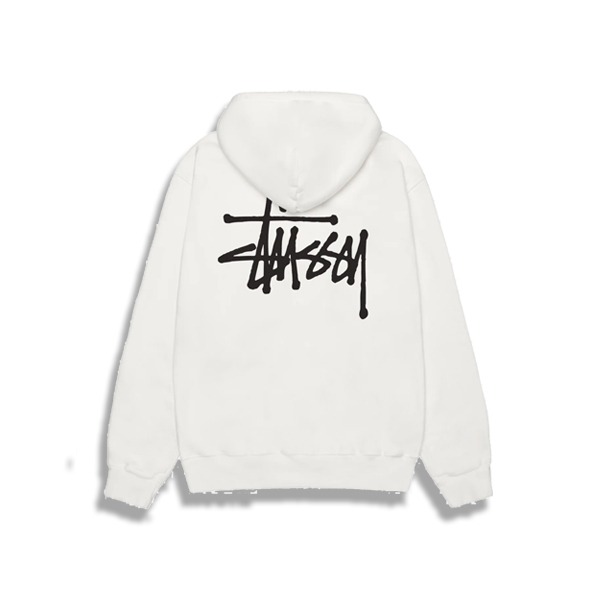In the landscape of global fashion, few brands have had the enduring cultural impact and underground-to-mainstream pull that Stüssy enjoys. Born in the surf culture of Southern California in the early 1980s, Stüssy has become a legendary name in streetwear—a term that itself was still in formation when the brand began. Its rise was not just about clothing, but about community, creativity, and credibility. Today, Stüssy remains at the forefront of the fashion industry, not just due to its legacy, but because of its uncanny ability to remain relevant across generations and subcultures. This lasting allure is often referred to as the “Stüssy pull“—a term that encapsulates its gravitational appeal among youth, artists, skaters, musicians, and fashion aficionados alike.
Origins: From Surfboards to Streetwear
Stüssy was founded by Shawn Stussy, a surfboard shaper from Laguna Beach, California. In the late 1970s and early 1980s, Shawn began scribbling his now-famous signature on custom surfboards. It wasn’t long before that same scrawl found its way onto T-shirts, which he sold out of the back of his car. These shirts quickly garnered attention, not just from surfers, but from the broader Southern California youth culture. The designs, minimalist yet bold, spoke to a new generation.
In 1984, Shawn partnered with Frank Sinatra Jr. (no relation to the singer), and together they turned Stüssy into a legitimate apparel brand. They sold their goods in boutique shops, leveraging a scarcity model that would become a hallmark of modern streetwear—limited releases, hard-to-find items, and a “cool by association” ethos.
Global Growth and Cultural Impact
By the late 1980s and early 1990s, Stüssy had expanded globally. The brand’s international success was largely driven by its appeal to urban youth cultures across the world. Whether in Tokyo, London, or New York, Stüssy was embraced by skaters, DJs, graffiti artists, and sneakerheads. Its logo—derived from Shawn’s signature—became a symbol of insider status. To wear Stüssy was to signal membership in a kind of global streetwise elite.
What made Stüssy unique was its blend of influences. It fused surf, skate, punk, hip-hop, reggae, and club culture—elements that typically lived in different worlds. This fusion gave the brand an almost chameleon-like ability to adapt to trends while still maintaining its identity. It was streetwear before “streetwear” was even a clearly defined genre.
The “Stüssy Pull”: What Makes It So Appealing?
The term “Stüssy pull” refers to the brand’s enduring magnetism—its ability to remain cool, desirable, and culturally significant despite changing fashion trends. But what exactly constitutes this pull?
-
Authenticity: From the outset, Stüssy was never trying too hard. It wasn’t created to chase trends or appease corporate interests. Instead, it was born out of a genuine creative expression and connection to real subcultures. That authenticity has remained intact, and authenticity, in the world of youth culture, is currency.
-
Exclusivity: Stüssy has always embraced a low-key, underground marketing strategy. Its drops are often limited, and it rarely engages in overt advertisement. This scarcity, combined with high demand, fuels desirability. When people know a brand isn’t trying to appeal to everyone, it often becomes more appealing to the few who “get it.”
-
Collaborations: Stüssy has mastered the art of collaboration. From Nike and BAPE to Dior and Levi’s, the brand has engaged in partnerships that elevate its status while never diluting its identity. These collaborations are carefully curated to resonate with its core audience while expanding its reach.
-
Timeless Design: Stüssy’s designs manage to feel both nostalgic and modern. The brand has stayed true to its roots while evolving just enough to stay fresh. Whether it’s the classic 8-ball graphic, the tribal patterns, or the handstyle logo, Stüssy pieces feel iconic.
-
Cultural Fluency: Stüssy doesn’t just follow trends—it often sets them. Its connection to music, skateboarding, and nightlife has given it a cultural literacy that few brands can match. Whether it’s through DJ sets, pop-up events, or underground lookbooks, Stüssy communicates in a language that resonates deeply with its audience.
Stüssy’s Role in Shaping Modern Streetwear
Stüssy’s influence on the broader streetwear movement is immense. It laid the groundwork for brands like Supreme, Palace, Off-White, and countless others that would come later. Its business model—limited drops, cultural alignment, collaboration-heavy releases—is now a template used across the industry.
More importantly, Stüssy helped legitimize streetwear as a genre. It proved that brands rooted in subculture could achieve commercial success without selling out. In doing so, it bridged the gap between the underground and the mainstream, high fashion and youth culture.
The Resurgence: Why Stüssy Still Matters
In the 2010s and 2020s, Stüssy experienced a significant resurgence. While it never truly faded, the brand became even more prominent, especially as nostalgia for 90s and early 2000s styles grew. New collaborations and design revamps attracted younger audiences who may not have experienced its earlier heyday.
Social media also played a role in amplifying Stüssy’s presence. Instagram mood boards, TikTok style influencers, and fashion-forward celebrities regularly featured the brand. But unlike many trendy labels that rely solely on hype, Stüssy’s deep-rooted legacy gives it staying power.
It’s also worth noting that the brand has embraced sustainability and thoughtful design in recent years. As consumers become more conscious of ethical fashion, Stüssy’s small-batch, high-quality production model appeals to a more discerning crowd.
Community, Not Just Clothing
Another key component of the Stüssy pull is its community-driven ethos. The brand has always prioritized people—its audience, collaborators, and internal team. The International Stüssy Tribe (IST), a loose collective of creative individuals tied to the brand in the early 90s, is a perfect example. These were not celebrities or influencers in the modern sense, but tastemakers in their respective scenes. They helped shape the brand’s global identity and proved that Stüssy was more than a label—it was a network.
Even today, Stüssy continues to build community through events, creative projects, and selective retail experiences. Its stores are less about commercialism and more about curation, culture, and connection.
Conclusion: The Stüssy Legacy
Stüssy stands as one of the most important fashion brands of the modern era—not because it chased the limelight, but because it created its own lane and stayed true to it. The “Stüssy pull” is not just about the clothes; it’s about the culture. It’s about a brand that evolved organically from a subcultural movement and remained grounded in authenticity.
As streetwear continues to shape the future of fashion, Stüssy’s legacy is not just secure—it’s foundational. For every new wave of creative youth, the brand continues to offer something rare: style with soul, hype with heritage, and fashion with a face you can trust. In a sea of trends, Stüssy remains a compass. And that’s what keeps the pull so strong.






